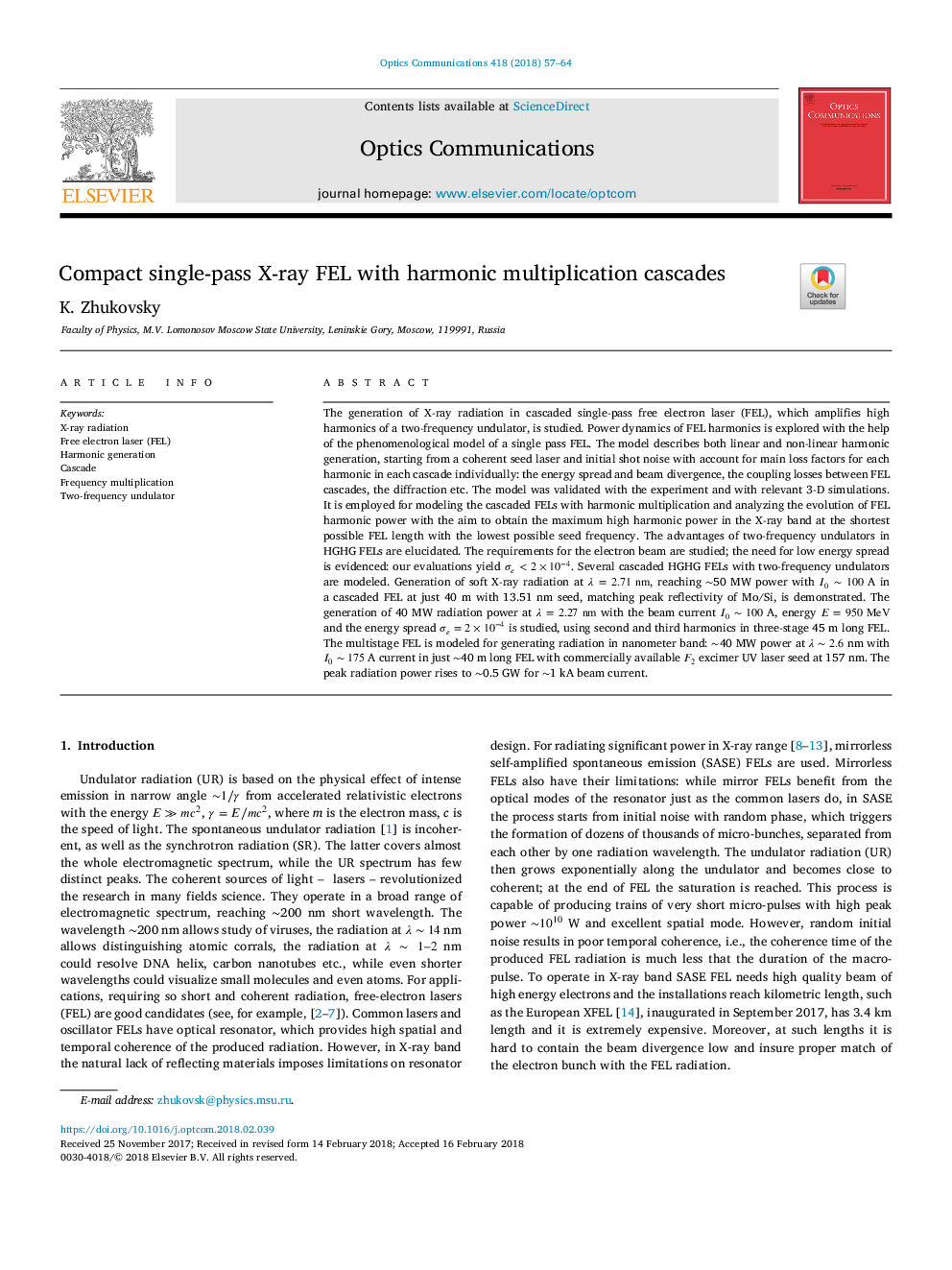| Article ID | Journal | Published Year | Pages | File Type |
|---|---|---|---|---|
| 7925343 | Optics Communications | 2018 | 8 Pages |
Abstract
The generation of X-ray radiation in cascaded single-pass free electron laser (FEL), which amplifies high harmonics of a two-frequency undulator, is studied. Power dynamics of FEL harmonics is explored with the help of the phenomenological model of a single pass FEL. The model describes both linear and non-linear harmonic generation, starting from a coherent seed laser and initial shot noise with account for main loss factors for each harmonic in each cascade individually: the energy spread and beam divergence, the coupling losses between FEL cascades, the diffraction etc. The model was validated with the experiment and with relevant 3-D simulations. It is employed for modeling the cascaded FELs with harmonic multiplication and analyzing the evolution of FEL harmonic power with the aim to obtain the maximum high harmonic power in the X-ray band at the shortest possible FEL length with the lowest possible seed frequency. The advantages of two-frequency undulators in HGHG FELs are elucidated. The requirements for the electron beam are studied; the need for low energy spread is evidenced: our evaluations yield Ïe<2Ã10â4. Several cascaded HGHG FELs with two-frequency undulators are modeled. Generation of soft X-ray radiation at λ=2.71nm, reaching â¼50 MW power with I0â¼100 A in a cascaded FEL at just 40 m with 13.51 nm seed, matching peak reflectivity of Mo/Si, is demonstrated. The generation of 40 MW radiation power at λ=2.27nm with the beam current I0â¼100 A, energy E=950MeV and the energy spread Ïe=2Ã10â4 is studied, using second and third harmonics in three-stage 45 m long FEL. The multistage FEL is modeled for generating radiation in nanometer band: â¼40 MW power at λâ¼2.6 nm with I0â¼175 A current in just â¼40 m long FEL with commercially available F2 excimer UV laser seed at 157 nm. The peak radiation power rises to â¼0.5 GW for â¼1 kA beam current.
Related Topics
Physical Sciences and Engineering
Materials Science
Electronic, Optical and Magnetic Materials
Authors
K. Zhukovsky,
